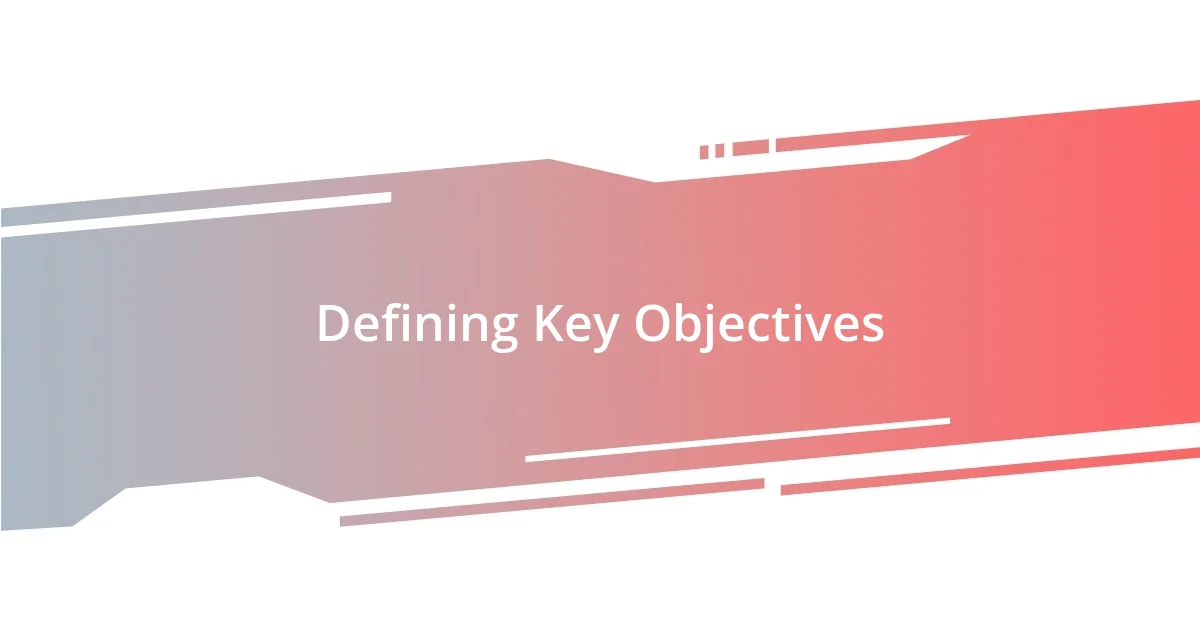Key takeaways:
- Incorporating patient narratives and emotional responses into CRPS data collection enhances understanding and reveals the condition’s complexities beyond just physical symptoms.
- Defining clear, measurable objectives and engaging patients in the data collection process leads to more relevant insights, improving treatment plans and care outcomes.
- Utilizing a mix of data sources and visual representation tools fosters a collaborative environment, empowering patients and enriching the analysis of their experiences.

Understanding CRPS Data Collection
When it comes to CRPS (Complex Regional Pain Syndrome) data collection, I find that understanding the intricacies of the condition is crucial. Imagine continuously experiencing pain that seems to have no clear origin or cause. This often challenges the traditional methods of data gathering, as we need to create a framework that not only records the symptoms but also captures the emotional responses of patients.
In my own experience working with CRPS patients, I’ve seen firsthand how their pain can fluctuate and that these variations tell a significant story. For instance, I once spoke to a patient who described their pain as “shifting,” making it hard to quantify. This made me ponder: how do we accurately measure something that feels so fluid? Gathering qualitative data through personal narratives can be incredibly insightful; it sheds light not just on the physical symptoms but also on the profound emotional impact of living with CRPS.
Moreover, I am often struck by the importance of including patients in the data collection process. Having a collaborative approach where patients share their experiences can lead to a richer comprehension of their condition. Have you ever wondered how the data we collect influences treatment plans? Engaging patients not only validates their experiences but also creates a comprehensive dataset that reflects their diverse realities, ultimately improving care and outcomes.

Defining Key Objectives
Defining key objectives in collecting CRPS data is essential for ensuring that we gather meaningful insights. Personally, I’ve found that defining these objectives helps outline what we genuinely need to know. For example, establishing whether we are more focused on the physical aspects of pain or the psychological impacts can shift our entire data collection process.
In my experience, it’s crucial to involve medical professionals and patients alike when crafting these objectives. I recall a project where I sat down with a group of CRPS patients, and what struck me was their diverse perspectives on what they wished to communicate. They voiced the need for a stronger emphasis on daily functioning and emotional fatigue. By integrating their feedback, the objectives became more relevant, guiding us to collect useful and pertinent data that truly reflects their experiences.
Additionally, setting clear, measurable goals can transform the way we approach data collection. For instance, instead of just noting pain levels, we could track specific activities that trigger or alleviate pain. One time, I developed a simple questionnaire that included activities like walking or even just standing up, and the depth of information we acquired was remarkable. It allowed us to analyze patterns and correlations that would have gone unnoticed otherwise.
| Objective | Description |
|---|---|
| Quantifying Pain Levels | Measure pain intensity and frequency to identify trends. |
| Capturing Emotional Responses | Gather qualitative data on the psychological impacts of CRPS. |
| Tracking Daily Functioning | Assess how pain affects day-to-day activities and quality of life. |

Selecting Appropriate Data Sources
Selecting appropriate data sources is foundational to understanding CRPS comprehensively. I often prioritize multi-faceted approaches, recognizing that each source reveals different dimensions of the experience. For instance, clinical data from hospital records provides a factual basis—it’s a starting point. However, integrating sources like patient journals or support group discussions can uncover the stories behind the statistics. The emotional context offered by these personal insights resonates deeply with the realities of CRPS, much more than numbers alone can convey.
Here are some data source options I find invaluable:
– Clinical Records: Documented medical history and treatment progress give a clear view of the patient’s journey.
– Patient Surveys: Collecting structured feedback can highlight symptom fluctuations and gauge the effectiveness of treatments over time.
– Qualitative Interviews: Personal narratives allow for an exploration of emotional aspects, revealing how pain affects daily life and mental health.
– Wearable Technology: Devices that monitor physical activity and pain levels in real-time can provide objective data that reflects a patient’s daily challenges.
– Social Media and Online Forums: Observing discussions in these spaces can provide insight into common concerns and the sense of community among those affected by CRPS.
Finding the right mix of sources has been crucial in my own data collection efforts. I remember one time, while examining a patient’s online forum participation, I learned about a common coping mechanism they used. It wasn’t something we could capture through clinical surveys, but it offered valuable insight into resilience. This experience highlighted just how powerful and multifaceted appropriate data sources can be in crafting a comprehensive picture of CRPS.

Utilizing Effective Data Collection Tools
Utilizing effective data collection tools is essential for maximizing the insights we glean about CRPS. I often find that combining qualitative and quantitative methods gives us a richer narrative. For instance, I once used a combination of symptom diaries and pain intensity charts in an ongoing study. Seeing daily experiences mapped against numerical data revealed patterns that were both surprising and invaluable—a stark reminder of how holistic approaches bring depth to our understanding.
One tool I particularly cherish is mobile apps designed for real-time data input. A patient I worked with used one to track their symptoms throughout the day. What struck me was how they could pinpoint moments of distress against specific activities they engaged in, like grocery shopping or attending social gatherings. This nuanced data collection enabled us to discuss solutions tailored to their life context. Have you ever thought about how technology can empower patients in their journey? It opens up dialogues that numbers alone often miss.
Additionally, I’m a firm advocate for using visual data representation tools, like charts and graphs. They not only clarify trends but also make sharing insights with patients and stakeholders more engaging. I remember presenting a visual correlation between emotional well-being and pain levels during a workshop. The reactions were transformative—attendees felt more invested in understanding how their emotions directly influenced their physical health, fostering a sense of empowerment. It’s moments like these that reinforce my belief in using effective tools to make data collection not only informative but deeply impactful.

Analyzing Collected Data
Analyzing the data I collect is where the magic really starts to unfold. I often find myself poring over both the numerical scores and the emotional narratives side by side. There was a time when I analyzed data from a patient who kept meticulous notes on their pain levels, but also shared vivid stories about what triggered their episodes. It was in the juxtaposition of these two perspectives that I discovered a surprising correlation between stress from work and severe pain flare-ups. This blend of quantitative and qualitative analysis enriched my understanding far beyond mere averages.
As I dive deeper into the analysis, I also pay close attention to identifying trends and outliers. For instance, during a recent project, a few patients consistently reported lower pain levels on weekends. It made me wonder—what changes in their environment or routines were contributing to this shift? This curiosity led me to conduct follow-up interviews, revealing that their social interactions and relaxation activities significantly impacted their overall pain experience. It’s these moments of discovery that remind me of how the analysis isn’t just about crunching numbers; it’s about finding stories hidden within the data.
Moreover, integrating feedback loops can significantly shape my approach to data analysis. Whenever I present findings, I invite patients to share their reactions and insights on the data we’ve collected. One patient told me how seeing their pain journey mapped out visually helped them understand not just their struggles but also their progress over time. This feedback not only validates my efforts but also fosters an atmosphere of collaboration. Have you ever noticed how engaging patients in their data analysis can empower them? I believe it strengthens their ownership of their health journey, turning abstract numbers into meaningful reflections on their experiences.

Ensuring Data Accuracy and Integrity
Ensuring data accuracy and integrity is paramount in my data collection efforts. I’ve learned through experience that even the slightest inaccuracies can ripple through the entire analysis process, skewing insights and potentially leading to misguided conclusions. I recall a time when I was puzzled by inconsistent reports from one participant. After a deep dive into their records, I discovered that they were misinterpreting the range of their pain scale. That small misunderstanding highlighted just how critical it is to clearly define metrics and consistently validate the data being collected.
I often implement regular check-ins with patients to verify their entries. This simple step fosters an environment of collaboration and trust, where patients feel encouraged to share their experiences openly. For example, I had a patient who initially hesitated to report their emotional distress alongside physical pain. Through our discussions, they expressed how they hadn’t realized the extent to which their mood swings affected their pain. This revelation not only enriched the data but also empowered them to take active steps in managing their symptoms. Have you considered how open dialogue can bolster the accuracy of your data? It’s a reminder that our work goes beyond numbers; it’s about understanding the human experience.
To further uphold data integrity, I emphasize the importance of using standardized protocols. I remember a project where I had multiple data collectors involved. To minimize variability, we created a shared guide outlining the specific methods for data entry and collection. This initiative not only improved consistency but also created a sense of camaraderie among the data collectors. When everyone is on the same page, it transforms the data into a coherent narrative that truly reflects the patients’ journeys, rather than a hodgepodge of disjointed information. It’s amazing how establishing guidelines can elevate the quality and reliability of the data we gather.

Implementing Feedback for Improvement
Integrating feedback for improvement is a vital part of how I refine my data collection methods. After one presentation, a patient candidly pointed out that the terminology I used felt clinical and disconnected from their reality. This moment struck me; I realized that making the data more relatable could foster deeper engagement and understanding. Have you ever considered how the language we choose might alienate rather than connect? I now strive to use words that resonate, bridging the gap between data and the genuine human experiences behind it.
In a recent feedback session, a participant expressed how visual representations of their pain data encouraged them to reflect on their coping mechanisms. I was pleasantly surprised to see how something as simple as a graph could empower them to identify patterns in their pain management. By sharing these insights, they felt more involved in their treatment journey, which is something I aim for with all my patients. Their feedback not only guides my presentation style but also reinforces the idea that I am not just a collector of data; I am a partner in their healing process.
Moreover, implementing feedback isn’t only about improving data presentation; it’s also about evolving my approach to analysis. I once had a patient suggest incorporating a brief post-survey after data meetings, which I initially overlooked. This small adaptation turned out to be a game changer. It helped me gather insights directly from the source about what worked and what didn’t, enriching my understanding of their needs. Engaging actively with feedback transformed my data collection into a dynamic conversation rather than a static process. Isn’t it incredible how a simple request can elevate the whole experience?















